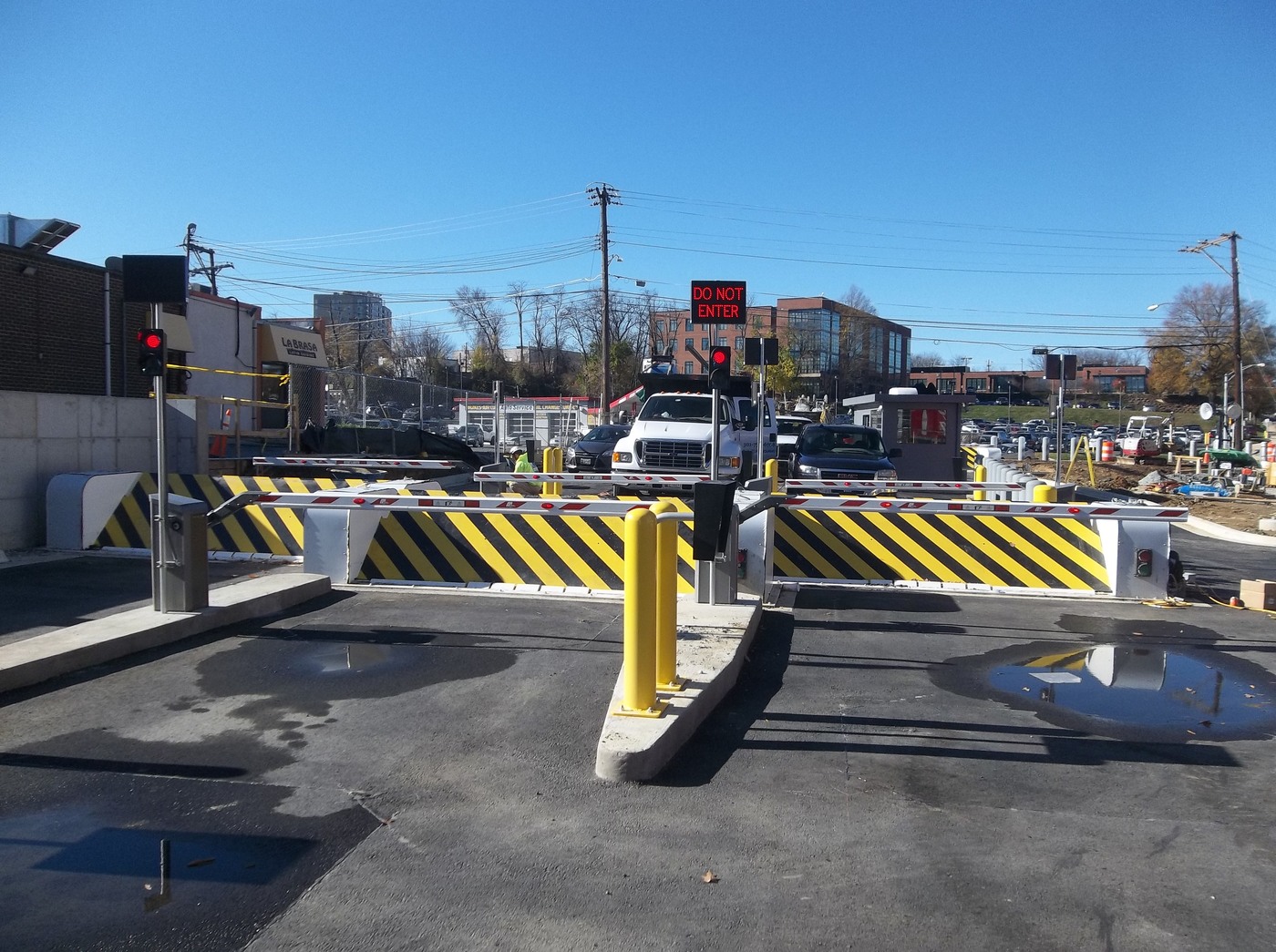The Definitive Guide for Wedge Barriers
Facts About Wedge Barriers Uncovered

Wedge Barriers - An Overview
g., springtime support 65 )may be dealt with to the end of the spring rod 58 to make it possible for compression of the springs 60. As the springtimes 60 are pressed between the spring sustains 62, the springtime setting up 54 generates a pressure acting on the cam paired to the spring rod 58 in an instructions 66. For instance, the remaining pressure applied to
the webcam to deploy the wedge plate 16 might be supplied by an electromechanical actuator 84 or other actuator. Thus, the springtime setting up 54 and the actuator 84(e. g., electromechanical actuator)may run with each other to translate the cam and lift the wedge plate 16.
As mentioned above, the springtime assembly 54 puts in a constant pressure on the camera, while the electromechanical actuator may be regulated to put in a variable force on the cam, thus allowing the training and decreasing( i. e., releasing and pulling back )of the wedge plate 16. In specific embodiments, the consistent pressure used by the spring setting up 54 might be adjustable. g., electromechanical actuator) is disabled. As will be valued, the springtime assembly 54 might be covered and protected from particles or other aspects by a cover plate(e. g., cover plate 68 displayed in FIG. 4) that might be substantially flush with the raised surface 38 of the structure 14. As discussed above, in the released position, the wedge plate 16 offers to block gain access to or travel past the obstacle 10. As an example, the obstacle 10(e. g., the wedge plate 16 )might obstruct pedestrians or continue reading this vehicles from accessing a go to these guys residential or commercial property or path. As discussed over, the obstacle 10 is connected to the anchor 30 secured within the structure 14,

front braces 71. Consequently, the link assemblies 72 might pivot and turn to make it possible for the collapse and extension of the linkage settings up 72 throughout retraction and release of the bather 10. The link assemblies 72 cause activity of the wedge plate 16 to be restricted. For example, if a vehicle is traveling in the direction of the deployed wedge plate 16(e. As an example, in one situation, the security legs 86 might be expanded duringmaintenance of the barrier 10. When the security legs 86 are deployed, the security legs 86 support the weight of the wedge plate 16 against the surface area 12. As an outcome, the lifting system 50 might be shut down, serviced, removed, replaced, etc. FIG. 5 is partial perspective sight of a personification of the surface-mounted wedge-style obstacle 10, highlighting the web cam 80 and the web cam surfaces 82 of the lifting system 50. Specifically, 2 webcam surfaces 82, which are described as lower web cam surfaces 83, are positioned listed below the camera 80. The lower web visit site cam surfaces 83 may be dealt with to the surface area 12 (e. For example, the lower camera surface areas 83 and the mounting plate 85 may develop a solitary item that is safeguarded to the support 30 by bolts or other mechanical fasteners. Additionally, two web cam surface areas 82, which are referred to as top cam surface areas 87, are placed over the web cam 80 and paired to (e. In other embodiments, interfering layers or plates might be placed between the surface area 12 and the reduced web cam surface areas 83 and/or the wedge plate 16 and the top cam surfaces 87 As discussed over, the camera
80 converts along the camera surfaces 82 when the wedge plate 16 is lifted from the retracted placement to the deployed setting. In addition, as pointed out over, the spring setting up 54 (see FIG. 3 )may supply a force acting on the camera 80 in the instructions 102 through springtime rod 58, which may minimize the force the electromechanical actuator 84 is needed to relate to the cam 80 in order to activate and lift the wedge plate 16. 1 )to the released position(see FIG. 4). As shown, the cam 80 includes track wheels 104(e. g., rollers), which call and translate along the camera surfaces 82 throughout procedure.